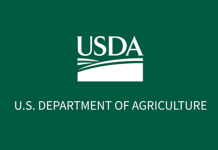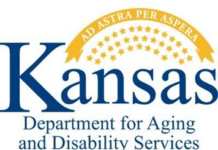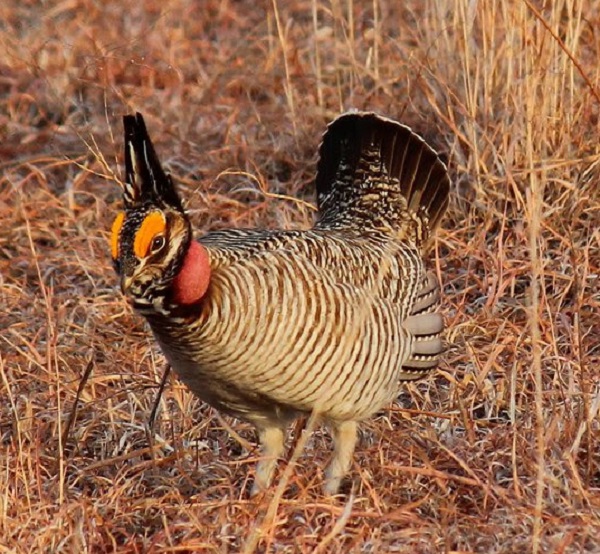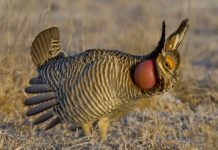(Updated to include comments from Livestock Association, Sierra Club, Congressman Tracey Mann with more details from the court ruling)
For the second time in a decade, environmental protections for the lesser prairie chicken have been lifted following a federal judge’s order in Texas earlier this week.
U.S. District Judge David Counts agreed to a request from the U.S. Fish and Wildlife Service to vacate a 2022 decision to give the bird – known for its feathered feet and stout build – environmental protections.
Three years ago, President Joe Biden’s administration listed the bird as threatened in Kansas and endangered in other parts of a five-state region including portions of Texas, New Mexico, Oklahoma, Kansas and Colorado.
With the election of President Donald Trump, the government asked that the listing be set aside amid ongoing litigation that challenged the decision to extend environmental protections to the bird, also known for its elaborate courtship rituals.
Fish and Wildlife asked the judge to set aside the listing, saying it used faulty analysis when it divided up the region into where the bird would be considered “endangered” or “threatened.”
Fish and Wildlife listed the birds as “endangered” in eastern New Mexico and in the western part of the Texas Panhandle, where there were believed to be as few as 5,000 birds remaining, with the count dropping to as low as 1,000 birds in 2015.
The bird was listed as “threatened” in south-central and southwestern Kansas, southeastern Colorado, western Oklahoma and the northeast Texas Panhandle.
Regulators said the prairie chicken was not currently in danger of extinction in those areas but was likely to become at risk of extinction within the foreseeable future.
The government concluded that it did not provide adequate justification and analysis to support the determination that the two identified population segments of the lesser prairie-chicken were warranted.
“The service concluded that both population segments were ‘significant’ because loss of the southern population segment would result in a significant gap in the range of the species,” the agency said in asking that the rule be vacated.
“The service now believes that conclusion was in error because (it) did not consider whether the gap in the range would actually be significant for the species…”
Counts agreed to the agency’s request.
“Fish and Wildlife’s concession points to serious error at the very foundation of its rule,” Counts wrote.
“Fish and Wildlife is unable to correct this square one error without engaging in an entirely new analysis,” Counts wrote.
“And for another, any disruptive consequences of vacating the final rule are short lived and minimized by the sixteen existing voluntary conservation programs and efforts in place across the range of the lesser prairie-chicken.”
Fish and Wildlife first listed the lesser prairie chicken as a threatened species in 2014, but it was challenged in court and later set aside in 2015.
Three years ago, the Biden administration again listed the bird as protected, leading to a storm of litigation.
In Kansas, the listing was challenged by the Kansas Livestock Association and Kansas Attorney General Kris Kobach.
Kobach said the listing would have undercut the Kansas economy.
“The listing of the species as threatened or endangered would have crippled oil and wind energy production and would have limited where and when Kansas ranchers could graze cattle on their own property,” Kobach said in a statement reacting to the decision.
“And it was based on manipulated numbers dividing the species into subgroups to create the impression the species was threatened—when in fact drought had simply caused populations in some areas to drop, while in other areas the numbers were stable. I’m grateful that the court saw it our way.” Kobach said.
Matt Teagarden, chief executive officer of the Kansas Livestock Association, called the decision to vacate the listing and send it back for more consideration “a huge win for Kansas livestock producers.”
“There were significant flaws with the 2022 final rule that disproportionately affected livestock operations, and we are pleased the Trump administration and the court have agreed to reexamine the entire listing,” Teagarden said in a statement.
“Over the coming months, we hope the U.S. Fish & Wildlife Service will take into account the voluntary conservation efforts already taking place, most of which are being done by ranchers,” Teagarden said.
Zack Pistora, director for the Kansas Chapter of Sierra Club, said the decision was disappointing.
“The bottom line is that our economy and society both depend upon the well-being of our natural world,” Pistora said.
“If we lose the lesser prairie chicken and our grassland ecosystems, we will absolutely diminish the ecological foundation that offers the quality of life for ourselves and future Kansans,” he said.
“In the absence of federal protections, it’s up to our state agencies, individual landowners, the agriculture sector, and local communities to do whatever we can to not only save an iconic bird species, but our natural heritage and ecosystems as a whole.”
Kobach had argued that the listing failed to adequately consider preexisting and ongoing voluntary measures to protect the lesser prairie chickens, as well as the fact that rainfall amounts are the dominant factor in prairie chicken populations.
He also said the listing restricted the personal property rights of Kansas landowners.
There had been efforts in Congress to repeal the listing but failed.
Two years ago, Biden vetoed a congressional resolution blocking environmental protections for the lesser prairie chicken in Kansas and four other states.
Biden vetoed the resolution backed by the state’s Republican congressional delegation including U.S. Reps. Tracey Mann, Ron Estes and former Rep. Jake LaTurner as well as U.S. Sens. Roger Marshall and Jerry Moran.
In his veto message, Biden said the resolution would overturn “science-based rulemaking” that follows the law and would undercut the Endangered Species Act.
“The lesser prairie-chicken serves as an indicator for healthy grasslands and prairies, making the species an important measure of the overall health of America’s grasslands,” Biden said in vetoing the resolution.
If enacted, the measure “would undermine America’s proud wildlife conservation traditions, risk the extinction of a once-abundant American bird, and create uncertainty for landowners and industries who have been working for years to forge the durable, locally led conservation strategies that this rule supports.”
Mann praised the court ruling in a statement.
“This ruling is a win for Kansas agricultural and energy producers and a huge loss for radical climate activists and bureaucrats who have abused the Endangered Species Act for over a decade to hurt American agriculture and energy production,” he said.
















